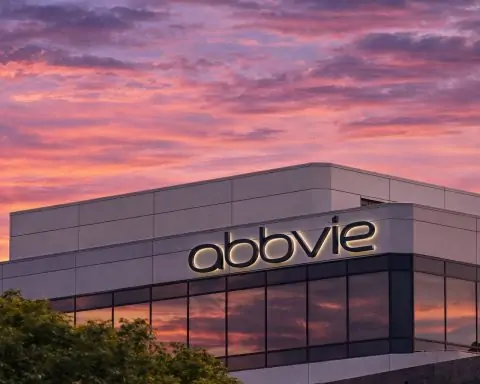- Livestream Teaser: OpenAI has scheduled a livestream for 1 PM ET (10 AM PT) on Oct. 21, 2025, hinting at a major new product reveal [1]. A six-second teaser clip from OpenAI shows a row of browser tabs, “leaving little to the imagination” that the announcement is an AI-powered web browser [2]. CEO Sam Altman even tweeted it’s “a new product I’m quite excited about” [3].
- Browser Features: Reports suggest the browser will be built on Chromium and deeply integrate OpenAI’s ChatGPT and Operator agents [4] [5]. In practice, that means users could chat with GPT-4 directly in the browser and let the AI “think, act, and decide on behalf of users,” handling tasks like booking reservations or filling out forms [6] [7].
- Market Reaction: The news rattled markets – Alphabet (Google) shares plunged about 4% on Oct. 21 in early trading [8]. Investors worried an OpenAI browser could siphon traffic (and ad dollars) from Google’s core business. (Notably, Google’s stock was already near historic highs – ~$255 per share – just days before, driven by booming ad and cloud growth [9].)
- Browser Competition: This move kicks off a full-blown “AI browser war.” Google is already embedding its Gemini AI in Chrome, Microsoft is adding Copilot into Edge, and startups are racing in. For example, Nvidia-backed Perplexity launched its own “Comet” AI browser in July to challenge Chrome [10]. Even Atlassian recently paid $610 million to acquire The Browser Company (maker of the Arc browser) in a play to embed AI “copilots” into browsing [11]. OpenAI’s entry raises the stakes for all.
- Stock Outlook: Tech stocks remain buoyant on the AI boom. Microsoft’s stock is near record highs (~$514 on Oct. 17) with analysts targeting ~$618 (and some even $650+) for 2026 [12]. Chipmakers soared too – AMD spiked after landing massive AI-chip deals (including a ~6 gigawatt order from OpenAI), and analysts have lifted AMD’s price target to about $300 [13] [14]. However, some experts warn valuations are frothy: over half of fund managers see an AI “bubble,” and even Sam Altman admitted investors might be “overexcited” about AI [15].
OpenAI’s Surprise Announcement and the New Browser Teaser
OpenAI shocked the tech world by teasing a live product announcement for Oct. 21 – just weeks after reports of a forthcoming browser. The official teaser (shared on OpenAI’s social media) shows stylized browser tabs and promises “something new,” prompting speculation about an AI-powered web browser [16] [17]. Sam Altman himself fueled excitement, tweeting the livestream was for “a new product I’m quite excited about” [18]. Many outlets (9to5Mac, The Verge, MLQ) immediately read the signs: the imagery and timing strongly hint that ChatGPT is about to move from websites into a dedicated browser app [19] [20].
OpenAI’s browser project has been rumored for months. Earlier in 2025, Reuters and others reported that OpenAI had built a Chromium-based browser prototype integrating its AI models [21] [22]. 9to5Mac notes “OpenAI has been developing a web browser with ChatGPT integration for some time now” [23]. In other words, this is likely OpenAI’s first standalone app of its kind.
What the AI Browser Could Do
Initial reports suggest the new browser will center on OpenAI’s AI agents. According to Reuters, the browser is designed to include OpenAI’s Operator AI agent alongside ChatGPT [24]. Operator can autonomously complete web tasks (like booking flights or filling forms) on the user’s behalf. In practice, users might simply tell the browser what they want to do, and the AI will navigate websites and take action. For example, OpenAI has hinted that the browser could “book restaurant reservations, automatically fill out forms, and complete other browser actions” [25].
Importantly, the browser will feature a built-in ChatGPT interface. That means instead of opening chat.openai.com, users could converse with GPT-4 directly in the browser window. The Verge explains users could “interact directly with the chatbot through the browser” [26]. Deep integration on the Chromium engine (the same core as Chrome and Edge) would ensure compatibility with existing web standards.
As one tech blog (ts2.tech) describes it, OpenAI’s browser aims to transform the browser from “a passive tool to an active digital assistant.” It “will leverage AI to anticipate user needs, summarize content, and even automate tasks” – for example, it could not only find a recipe but automatically generate a shopping list and suggest cooking tips, all via natural conversation [27]. In short, OpenAI is building a browser around its AI, not just tacking AI onto a browser.
The AI Browser Wars
OpenAI’s move sets off a new phase in the browser market. Google still dominates with Chrome (over 68% market share) [28], but every major player is now embedding AI. Google’s own Gemini AI is being woven into Chrome and Search, Microsoft is baking GPT-powered Copilot into Edge and Windows, and independent players are eager to redefine browsing.
One notable competitor is Perplexity. Its Comet browser, launched in July 2025, already offers AI-driven navigation and task execution. Perplexity touts that Comet can “think, act, and decide on behalf of users” in an agentic interface [29]. The Browser Company’s Arc browser (which Atlassian recently acquired for $610M) similarly puts an AI assistant at the center of the UI. Even privacy-focused Brave has experimented with AI chat in its search.
The Verge sums it up: “The AI browser wars are starting to heat up.” Google has Gemini and Edge Copilot, while newcomers like Perplexity’s Comet and Arc are striving to chip away at Chrome’s dominance. Now, a dedicated OpenAI browser – tightly integrated with the world’s most famous chatbot – will join the fray [30]. Analysts say this could “intensify OpenAI’s competition with Google” in the AI race, because the browser is the gateway to ads and data [31].
Microsoft’s approach will be interesting too. As Microsoft AI head Mustafa Suleyman recently told The Verge, Microsoft’s plan isn’t a new browser but rather making Edge “a true agentic browser” by infusing it with AI over time [32]. In other words, Microsoft likely won’t launch a separate OpenAI-powered browser, but will embed OpenAI tech (and its own AI models) into Edge and Bing as the company has already been doing.
Investor Reaction and Stock Outlook
Financial markets reacted nervously to the OpenAI teaser. Alphabet’s stock (Google’s parent) plunged roughly 3–4% on Oct. 21 [33] as trading opened, reflecting investor concern. Alphabet had been soaring – Ts2 reports GOOGL traded around $255–256 in mid-October, a jump of over +30% year-to-date (with a blistering +38% Q3 gain) [34]. Many analysts saw Alphabet as a “buy”: over 30 analysts rated it a “Buy” with an average price target in the mid-to-high $250s [35]. Before today’s news, targets were as high as $310 (Scotiabank) or ~$294 (BMO) on optimism about Google’s ad recovery and AI investments [36].
After the drop, Alphabet still sits near multi-year highs (around $245–250 post-news). GuruFocus notes the decline but also reminds that Google’s financial health is robust (revenue over $370 billion trailing-12-months, ~30% profit margins) [37] [38]. Some experts see the pullback as a temporary wobble. Indeed, MLQ.com points out that the 4% slide was a “real-time investor sensitivity” to competition, and much will depend on whether OpenAI’s browser gains traction [39].
Other tech giants largely shrugged. Microsoft’s stock (at about $514 on Oct. 17) remains near record highs [40]. A Ts2 analysis notes 32 of 34 analysts rate MSFT a “Buy,” with a consensus 12-month target around $618 [41]. Some, like Wedbush’s Dan Ives, even forecast a $5 trillion valuation for Microsoft as its AI cloud strategy pays off [42]. Microsoft’s role as OpenAI’s partner (and heavy AI investor) has so far only bolstered its outlook, not hurt it.
Meanwhile, chip and AI stocks continue their roller-coaster. AMD’s stock is emblematic: Ts2 reports AMD “soared” on Oct 6 after landing a ~6GW GPU deal with OpenAI – jumping over 30% in one day [43]. Firms immediately raised AMD’s price target toward $300, calling the OpenAI and Oracle deals “transformative” for AMD [44]. NVIDIA remains the AI leader with a $1 trillion+ market cap; its stock has been volatile (up ~50% YTD) as investors weigh U.S.–China chip tensions against booming demand [45].
Notably, some Wall Street watchers are sounding caution. Bank of America surveys show 54% of fund managers think AI stocks are in a bubble [46]. The Bank of England warned of “risks of a sharp market correction” if AI valuations prove over-stretched [47]. Even Altman himself acknowledged investors are likely “overexcited” about AI right now [48]. In this context, the OpenAI browser teaser is a high-stakes gambit: it could spur the next wave of innovation – but if it disappoints, AI-rich stocks might retrace.
What Comes Next
OpenAI’s livestream is set to air at 10 AM PT/1 PM ET Oct. 21. Industry observers will be watching closely: some hope to see demo of the new browser in action, pricing details (free vs. paid?), and answers on privacy and data use. (Ts2 notes all eyes will be on how seamlessly the AI works and whether it can attract even a small fraction of today’s three billion Chrome users [49].)
If OpenAI delivers a smooth, capable AI browser, it could accelerate a shift in how we search and browse. As one analyst quoted in Ts2 put it regarding this AI era: we’re seeing a “tectonic AI platform shift” in technology [50]. A successful OpenAI browser might help cement that shift – potentially forcing Google and Microsoft to move even faster on their own offerings.
On the other hand, Google’s entrenched user base and ad engine are not easily upended. Many experts caution it will take time to win over users to a new browser. In any case, the era of the browser as a passive gateway is clearly ending. As Ts2 remarks, “AI-driven browsers are essentially trying to unseat Google Search as the primary way people find information online,” by putting chatbots and agents at the center of the experience [51].
For now, the tech world waits for OpenAI’s reveal. One thing is certain: whatever happens, the company has moved beyond chatbots into direct competition with the biggest platform players. As The Verge notes, the browser race has heated up, and all eyes are on the livestream to see how OpenAI’s entry changes the game [52] [53].
Sources: Verified reporting from The Verge [54] [55] and Reuters [56] [57]; tech media coverage (9to5Mac [58] [59]); stock analysis from TechStock² [60] [61] [62] [63]; MLQ.ai [64]; and GuruFocus [65] [66]. (Data as of Oct. 21, 2025.)
References
1. www.theverge.com, 2. 9to5mac.com, 3. www.theverge.com, 4. ts2.tech, 5. www.theverge.com, 6. www.reuters.com, 7. www.theverge.com, 8. mlq.ai, 9. ts2.tech, 10. www.reuters.com, 11. ts2.tech, 12. ts2.tech, 13. ts2.tech, 14. ts2.tech, 15. ts2.tech, 16. www.theverge.com, 17. 9to5mac.com, 18. www.theverge.com, 19. 9to5mac.com, 20. mlq.ai, 21. ts2.tech, 22. www.reuters.com, 23. 9to5mac.com, 24. www.theverge.com, 25. www.theverge.com, 26. www.theverge.com, 27. ts2.tech, 28. www.reuters.com, 29. www.reuters.com, 30. www.theverge.com, 31. powerdrill.ai, 32. www.theverge.com, 33. mlq.ai, 34. ts2.tech, 35. ts2.tech, 36. ts2.tech, 37. www.gurufocus.com, 38. www.gurufocus.com, 39. mlq.ai, 40. ts2.tech, 41. ts2.tech, 42. ts2.tech, 43. ts2.tech, 44. ts2.tech, 45. ts2.tech, 46. ts2.tech, 47. ts2.tech, 48. ts2.tech, 49. powerdrill.ai, 50. ts2.tech, 51. powerdrill.ai, 52. www.theverge.com, 53. mlq.ai, 54. www.theverge.com, 55. www.theverge.com, 56. www.reuters.com, 57. www.reuters.com, 58. 9to5mac.com, 59. 9to5mac.com, 60. ts2.tech, 61. ts2.tech, 62. ts2.tech, 63. ts2.tech, 64. mlq.ai, 65. www.gurufocus.com, 66. www.gurufocus.com










